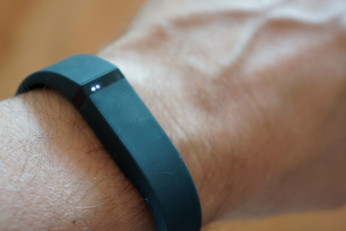
By Peyton Stroud, Associate Notes and Comments Editor
Just when you thought your Fitbit was logging your amounts of steps, now it’s logging some hours in the courtroom. Simon Mueller, a lawyer in Canada, is attempting for the first time to introduce data information stored on a wearable device as evidence in a personal injury case.[1] In that case, a woman was in an accident and claims that the accident resulted in a loss of activity.[2] Mueller hopes to use the data from her Fitbit to support his client’s assertion of decreased activity levels.[3] However, due to reliability issues, many experts are wary of the value it brings to the courtroom.[4]
Many lawyers and experts have concerns over the reliability of the data from the wearable technology.[5] For example, some wearable devices log activity just by a wave of the hand, while others may not.[6] Additionally, there is no standardization in terms of activity data.[7] According to analytics expert Rick Hu, “one of the shortcomings right now is that each of the device manufacturers collects their own information . . . so it’s hard to compare that data with other people’s data who are not using that particular device.”[8] Similarly, people often don’t even charge, sync, or wear their devices.[9] Although experts in the field do not think this data will stand on its own, many think it might be helpful in corroborating testimony from an expert witness.[10] Additionally, device wearable companies are continuing to make their tracking sensors more reliable.[11]
Similarly, data from these wearable devices raises other legal implications including privacy and ownerships concerns. In terms of privacy, privacy issues can be avoided because these device companies that collect data in the wireless cloud can be subpoenaed.[12] Although this might come as a shock to users, these device companies explicitly state in its service provider agreements that data may be released for valid legal requests.[13] Another obstacle lawyers will have to overcome to introduce data in the courtroom is HIPPA regulations.[14] According to Shakoori, an e-discovery lawyer, “there are currently no HIPPA regulations connected to these devices, but as they are linked to specialized health data, it could be a slippery slope.”[15] However, an exception in HIPPA might solve this problem because it allows for release of information for law enforcement queries and other legal requests.[16]
Technology being used as evidence is not new to courts. Several years ago, the court began requisitioning Facebook for information.[17] Legal experts opine that it is just a matter of time for data from these devices to be commonplace in the courtroom becoming a “black box” for the human body.[18]
[1] Margaret Littman, Data from wearable devices is being eyed as evidence in the courtroom, ABA J. (Apr. 1, 2015), available at http://www.abajournal.com/magazine/article/data_from_wearable_devices_is_being_eyed_as_evidence_in_the_courtroom.
[2] Id.
[3] Lucas Mearian, Data from wearable devices could soon land you in jail, Computerworld (Dec. 8, 2014, 3:00AM), http://www.computerworld.com/article/2855567/data-from-wearable-devices-could-soon-land-you-in-jail.html.
[4] See id.
[5] See id.; Littman, supra note 1.
[6] See Littman, at 1.
[7] See Mearian, supra note 3.
[8] Mearian, supra note 3.
[9] Littman, supra note 1.
[10] See id.
[11] See Parmy Olson, Fitbit Data Now Being Used in the Courtroom, Forbes (Nov. 16, 2014, 4:10 PM), http://www.forbes.com/sites/parmyolson/2014/11/16/fitbit-data-court-room-personal-injury-claim/.
[12] See Mearian, supra note 3.
[13] See id.
[14] Littman, supra note 1.
[15] Id.
[16] Olson, supra note 11.
[17] See id.
[18] See id.
